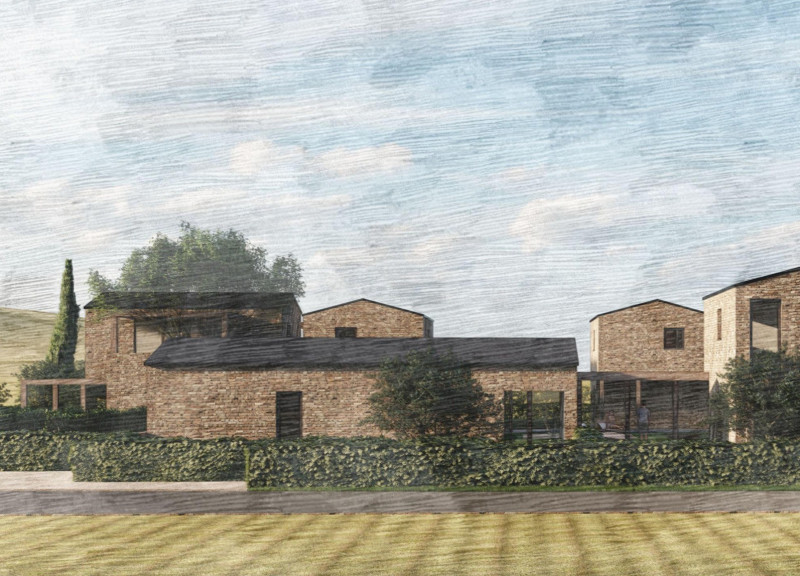5 key facts about this project
Tili Wine Guest Homes is situated in the scenic landscape near Assisi, Italy. The development serves as boutique accommodation that emphasizes the region's winemaking culture. The design focuses on creating connections between private living spaces and communal areas, allowing visitors to immerse themselves in both the natural surroundings and the local tradition of wine production. The layout of the guest homes reflects a thoughtful arrangement aimed at promoting relaxation alongside social interaction.
Architectural Context
The design takes inspiration from local architectural traditions, incorporating historical elements while also adapting to modern preferences. The five guest homes are compact, two-storey structures resembling traditional living towers found in the area. This choice ensures that the buildings blend in with the agricultural landscape. Each home includes distinct private and public areas, providing guests with personal space for quiet moments.
Central Courtyard
A central courtyard is a prominent feature that resembles traditional cloister spaces from Umbria. This area serves as a focal point for the complex, encouraging community engagement and offering a place for wine tasting. The courtyard invites guests to gather, fostering a sense of community while maintaining a connection to the surrounding environment.
Sustainable Practices
Environmental sustainability is a key aspect of the design. The use of reused bricks from existing structures reinforces the project's link to local history while minimizing waste. Additionally, natural and sustainable wood is featured throughout the design. Energy-efficient sun collectors are also integrated, reflecting a commitment to reducing the ecological footprint of the guest homes.
Landscaping and Flora
The landscape surrounding Tili Wine Guest Homes features a diverse selection of regional plants. Grapes, olive trees, and cypresses contribute to a tranquil atmosphere. This careful landscaping not only enhances the site’s natural beauty but also encourages visitors to appreciate the agricultural heritage of Umbria.
The design details are notable. The buildings are oriented to maximize views, and each home includes a private garden, creating intimate outdoor spaces for guests to enjoy. The overall approach allows visitors to engage deeply with both the landscape and the experience of staying in this unique setting.






















































